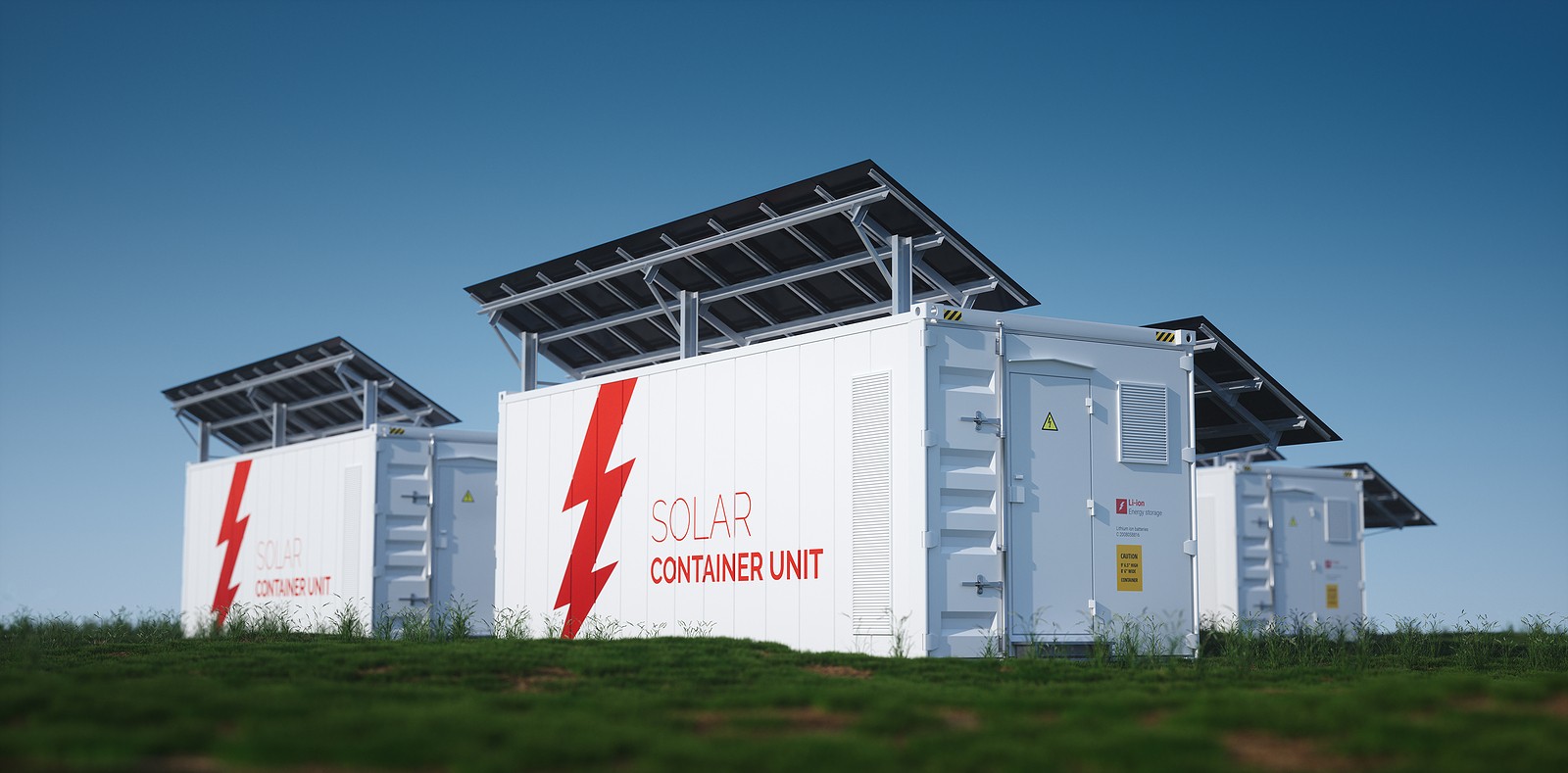
Solar energy storage is forecasted to be one of the biggest renewable trends of the 2020s, and we expect it will lead to significant solar energy market changes. Storing electricity generated by commercial solar installations appears to be such a basic concept at first glance that you may be wondering why storage wasn’t part of the solar energy world decades ago. Solar installations have unique features that can present challenges to traditional battery-based storage: Fortunately, today’s technology is up to the task. Here’s how a solar energy storage system works.
Electricity is Generated Via Solar Panels
A basic solar energy system is equipped with solar panels, mounting apparatus, an inverter which receives and regulates the electricity produced by the panels, and monitoring sensors to track the electricity being produced.
What happens to the excess solar energy produced by the system? Well, many systems are connected to the broader electric grid of the region, so even if the immediate facility doesn’t have a use for the electricity being generated, it can be passed onto the grid as a whole to supplement electricity being produced by other measures.
The problem is that some solar installations cannot feasibly be connected to the electric grid like this. And even if they can, peak production times for the solar energy system may not coincide with demand on the electric grid, so energy can still go to waste.
Setting Up Solar Batteries
Solar batteries come with their own inverters and the ability to regulate, then store the electricity produced for later use. The two most common batteries used for these purposes are lead acid (a dependable and very well-known technology) and lithium ion (generally more expensive, but current versions are excellent for efficient storage). These large, deep cycle batteries are designed to store days-worth of electricity, and in larger commercial solar installations a full battery array can be connected to help ensure no electricity is wasted.
Battery arrays can easily be customized depending on the needs of the owner. Some solar storage systems are set up specifically to provide supplementary power to the facility itself during low production hours – in other words, solar energy can be used to power devices or buildings at night or during overcast days. Other systems are connected to the regional electric grid as well, and when a battery is fully charged the excess can be distributed into the grid as needed. Both small-scale and large-scale storage systems are options.
Monitoring Technology
It’s important to remember that electricity produced by solar installations can fluctuate. In addition to having an inverter manage incoming electrical charge, solar batteries also need to accept different amounts of energy at different intervals over time. That takes a particularly durable battery and the necessary technology to monitor the process. Today’s advanced software can even use machine learning to predict when a solar installation will have excess energy that needs to be routed to a battery array.
Maintenance of Solar Energy Storage Systems
Maintenance is a vital part of solar energy storage: Solar batteries must be consistently cleaned, inspected, and repaired or replaced if necessary. An experienced company like Coldwell Solar can help you arrange maintenance or plan your storage system according to your facility’s unique needs.

